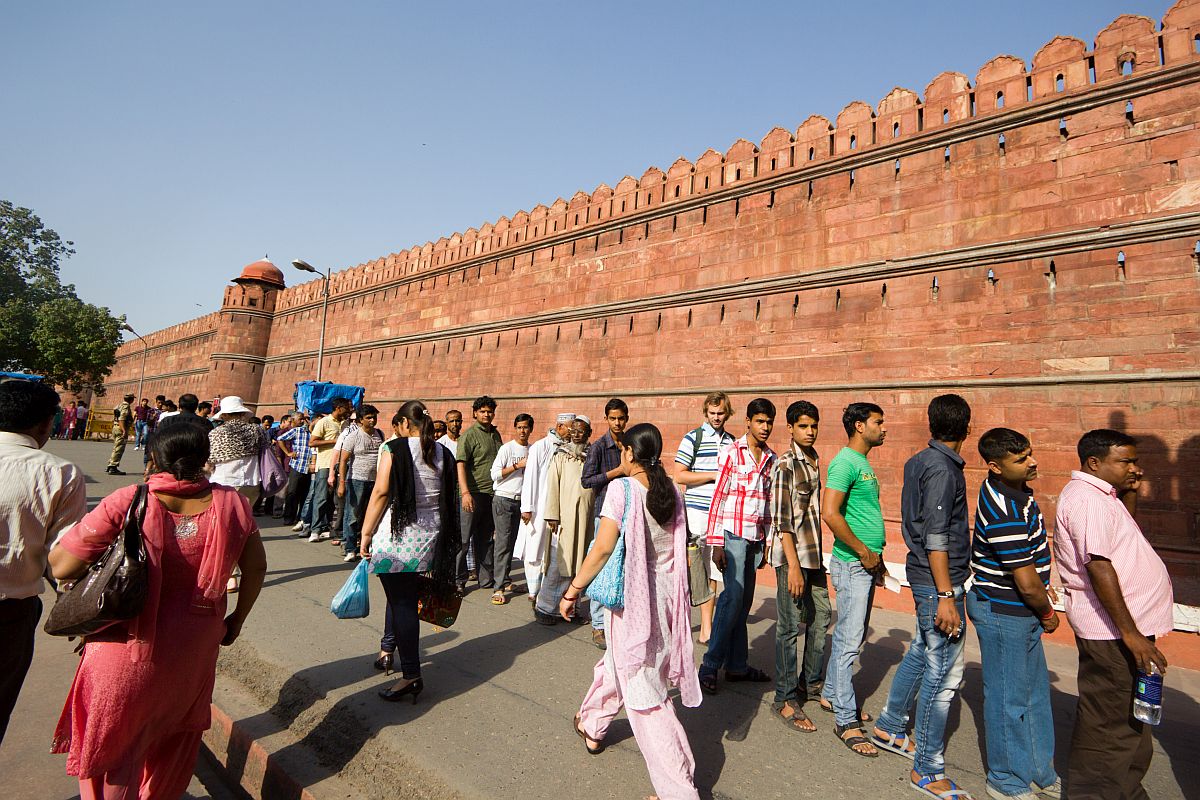ASI killed in tribals’ attack in MP
Following the incident, Madhya Pradesh Chief Minister Dr Mohan Yadav instructed MP DGP Kailash Makwana and district in-charge minister Lakhan Patel to reach the spot immediately and handle the situation.
As part of Azadi Ka Amrit Mahotsav, both the Indian and foreign travelers can avail the free entry to historical sites on these days.
SNS | New Delhi | August 8, 2022 6:25 pm

(ASI). (Photo: iStock)
On the 75th Independence day celebration, Union Culture Ministry has announced free entry to all Archaeological Survey of India (ASI)-protected monuments, sites, and museums across the country from August 5 to 15 . As part of Azadi Ka Amrit Mahotsav, both the Indian and foreign travelers can avail the free entry to historical sites on these days.
Taking it to Twitter, Union Culture Minister G Kishan Reddy said,”As part of ‘Azadi ka Amrit Mahotsav’ and the 75th I-Day celebrations, @ASIGoI has made entry free for visitors/ tourists to all its protected monuments/sites across the country, from 5th-15th August 2022.”
Advertisement
https://twitter.com/kishanreddybjp/status/1554761074787766277
Advertisement
Taking the celebration a step higher, various events are planned including a cleaning campaign and exhibitions. These events will be held in Agra which famously houses Taj Mahal.
As a part of Azadi Ka Amrit Mahotsav, the following monuments will be lit up – the Agra Fort, Akbar’s Tomb at Sikandra, Fatehpur Sikri, and Itmad-ud-daulah. Reports further claim that the Taj Mahal, Agra Fort, and Guru Ka Tal at Sikandra will hold exhibitions. Along with this, two tricolors each 50 feet high will be installed at Agra Fort and Fatehpur Sikri, as per reports.
There are 3,600 ASI protected monuments in India. In Delhi alone there are 10 ASI protected monuments.
Monuments to visit during 15, August celebrations
Purana Qila is one of the oldest forts in Delhi. It was built by the second Mughal Emperor Humayun and Surid Sultan Sher Shah Suri, and located on the site of the ancient city of Indraprastha. The fort formed the inner citadel of the city of Dinpanah.
Location: Near Delhi Zoo,Mathura Road
Nearest Metro Station: Pragati Maidan
Open: All days
Jantar Mantar, (Yantra – instruments, mantra – formulae) was constructed in 1724. Maharaja Jai Singh of Jaipur who built this observatory went on to build other observatories in Ujjain , Varanasi and Mathura. Jai Singh had found the existing astronomical instruments too small to take correct measurements and so he built these larger and more accurate instruments.
Location: Parliament Street, Connaught Place
Metro Station: Patel Chowk
Open: All days
Located near the crossing of Mathura road and Lodhi road, this magnificent garden tomb is the first substantial example of Mughal architecture in India.
It was built in 1565 A.D. nine years after the death of Humayun, by his senior widow Bega Begam. Inside the walled enclosure the most notable features are the garden squares (chaharbagh) with pathways water channels, centrally located well proportional mausoleum topped by double dome.
There are several graves of Mughal rulers located inside the walled enclosure and from here in 1857 A.D; Lieutenant Hudson had captured the last Mughal emperor Bahadur Shah II.
Location: Opp. Dargah Nizamuddin, Mathura Road
Metro Station: JLN Stadium
Open: Daily
Qutab Minar is a soaring, 73 m-high tower of victory, built in 1193 by Qutab-ud-din Aibak immediately after the defeat of Delhi’s last Hindu kingdom. The tower has five distinct storeys, each marked by a projecting balcony and tapers from a 15 m diameter at the base to just 2.5 m at the top.
The first three storeys are made of red sandstone; the fourth and fifth storeys are of marble and sandstone. At the foot of the tower is the Quwwat-ul-Islam Mosque, the first mosque to be built in India.
An inscription over its eastern gate provocatively informs that it was built with material obtained from demolishing ’27 Hindu temples’. A 7 m-high iron pillar stands in the courtyard of the mosque. It is said that if you can encircle it with your hands while standing with your back to it your wish will be fulfilled.
The origins of Qutab Minar are shrouded in controversy. Some believe it was erected as a tower of victory to signify the beginning of the Muslim rule in India. Others say it served as a minaret to the muezzins to call the faithful to prayer.
No one can, however, dispute that the tower is not only one of the finest monuments in India, but also in the world. Qutab-ud-din Aibak, the first Muslim ruler of Delhi, commenced the construction of the Qutab Minar in 1200 AD, but could only finish the basement. His successor, Iltutmush, added three more storeys, and in 1368, Firoz Shah Tughlak constructed the fifth and the last storey.
Location: Mehrauli.
Nearest Metro Station: Qutab Minar.
Open: All days.
Safdarjung’s Tomb is the last enclosed garden tomb in Delhi in the tradition of Humayun’s Tomb, though it if far less grand in scale. It was built in 1753- 54 as mausoleum of Safdarjung, the viceroy of Awadh under the Mughal Emperor, Mohammed Shah.
It has several smaller pavilions with evocative names like Jangli Mahal, (Palace in the woods), Moti Mahal (Pearl Palace) and Badshah Pasand (King’s favourite).
Location: Intersection of Safdarjung Road and Aurobindo Marg
Metro Station: Jor Bagh
Open: Daily
(with inputs from Delhi tourism)
Advertisement
Following the incident, Madhya Pradesh Chief Minister Dr Mohan Yadav instructed MP DGP Kailash Makwana and district in-charge minister Lakhan Patel to reach the spot immediately and handle the situation.
On the orders of the Allahabad High Court, Archaeological Survey of India (ASI) in the presence of a mosque team commenced the white washing and painting of the outer walls of Jama Masjid here from Sunday morning.
The Allahabad High Court on Wednesday approved white washing and painting in outer walls of Sambhal's Jama Masjid.
Advertisement
